Gallery Events
Dec
42016 |
Emeritus Prof. Ben ZuckermanThe Search for Extraterrestrial Intelligence (SETI) - And Why It Will FailLocation: Slichter 3853 It is likely that extrasolar planets exist that are similar to the Earth in having oceans, moderate atmospheric temperatures, and days similar in length to ours. However, development of a technological civilization probably requires a world with a good mixture of land and of oceans and this might be quite a rare combination. Many searches for radio and electromagnetic signals from extraterrestrial civilizations have been carried out; such searches are dubbed "SETI". However, Ben Zuckerman argues that, if technological extraterrestrials were common, then they would have come here long ago. The absence of evidence of such visitations implies that SETI searches will likely fail. Photo credit: ESO/Jose Francisco Salgado 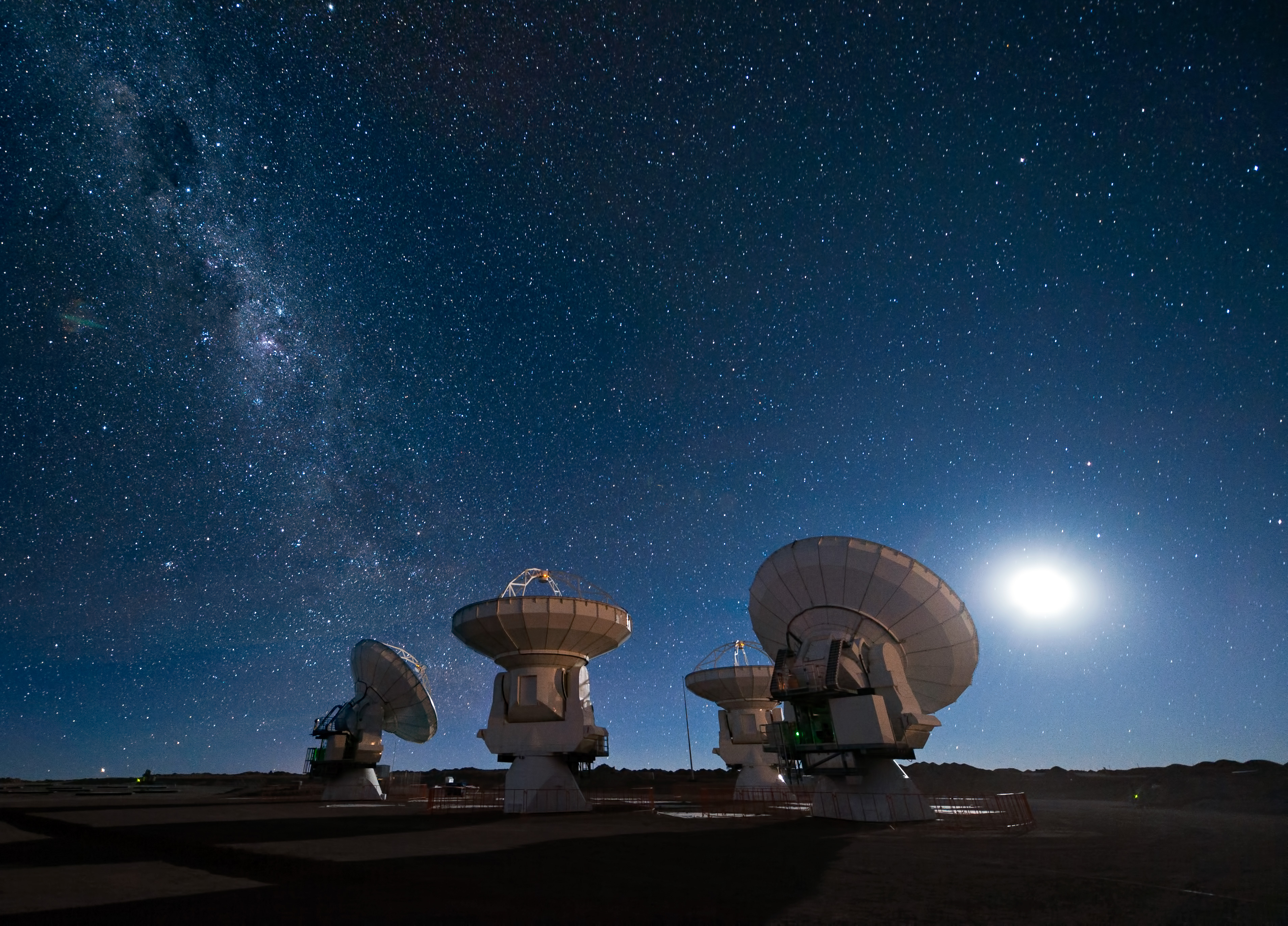
|
Nov
62016 |
Exploring Your Universe 2016Science outreachLocation: UCLA Campus - Court of Sciences Exploring Your Universe is an annual science outreach day held on the UCLA campus, filled with exciting science demos, activities, and talks. EYU has family-friendly activities that provide a wonderful look into real science for all ages, “from K through Gray”! For more info go to: http://eyu.astro.ucla.edu/ 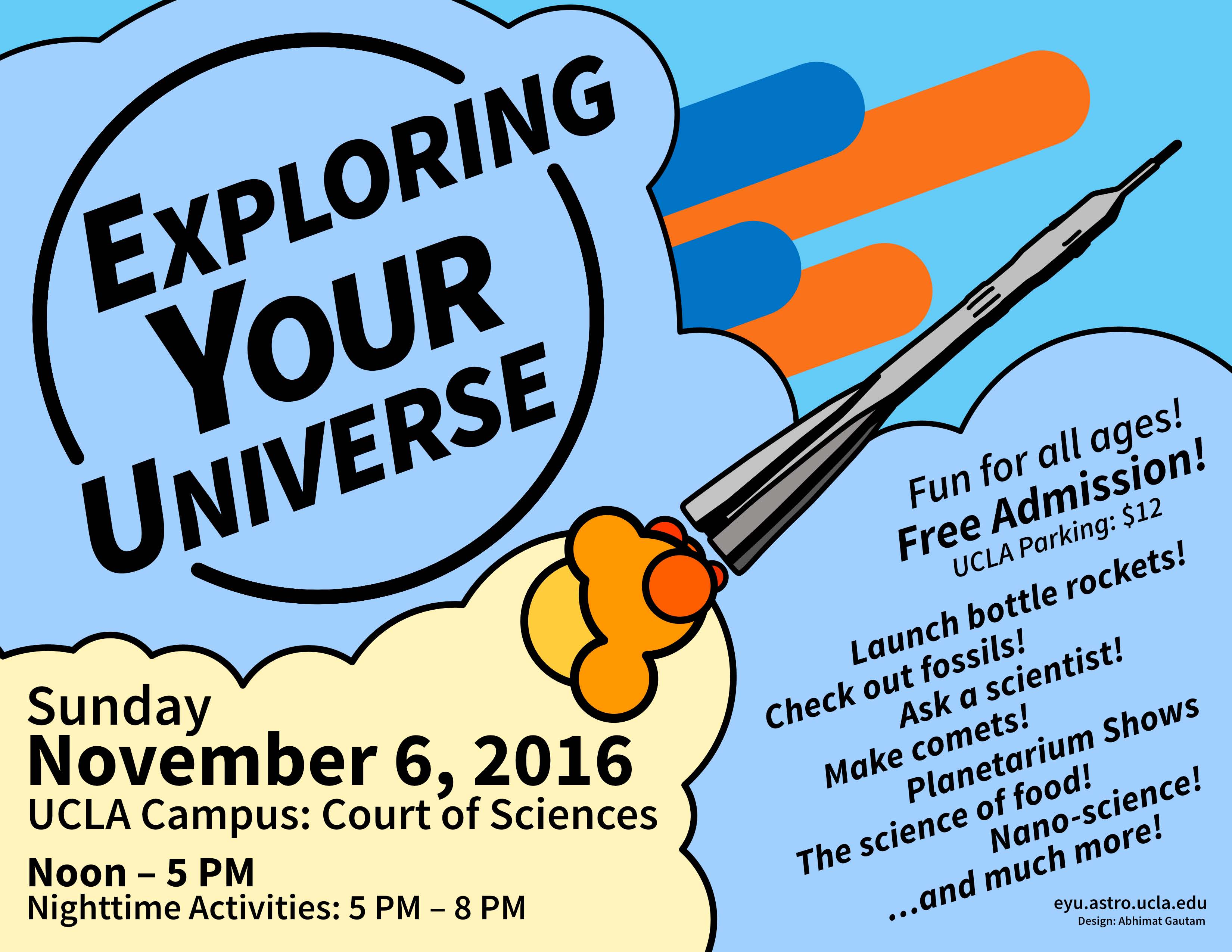
|
Oct
162016 |
Prof. Hilke SchlichtingPlanets around other StarsLocation: Slichter 3853 Recent observations by the Kepler space telescope have led to the discovery of more than 4000 exoplanets consisting of many systems with Earth- to Neptune-sized objects that reside well inside Mercury-like orbits around their respective host stars. Hilke Schlichting will discuss how and where these close-in planets formed and will highlight some of the planets residing in the habitable zone, like Promina Centauri b. She will conclude with summarizing our prospects for learning more about these systems in the near future and for assessing their suitability to harbor life. Photo credit: NASA/JPL 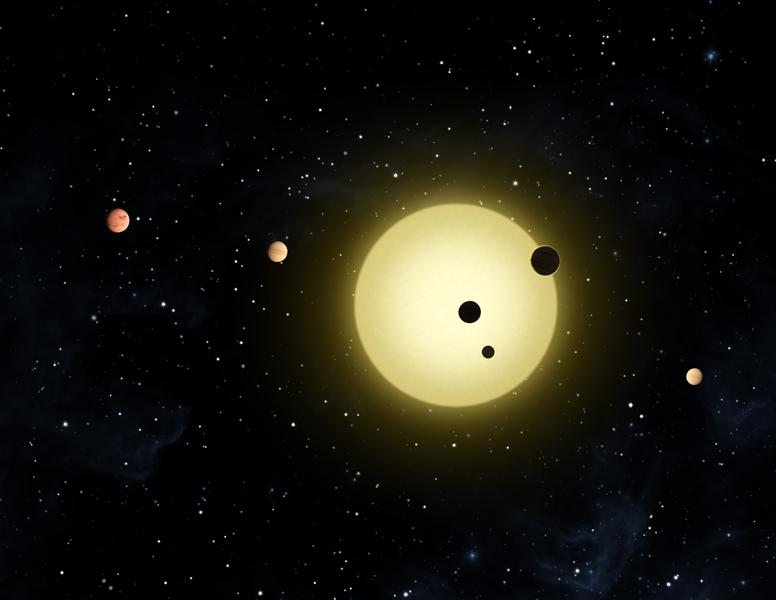
|
Sep
182016 |
Prof. Kevin McKeeganCalcium-Aluminum-rich Inclusions: The Solar System’s First RocksLocation: Slichter 3853 Chondritic meteorites are cosmic sediments that contain many distinct nebular products. In addition to chondrules and matrix, some chondrites have several percent of inclusions that are rich in Ca, Al, and other refractory elements. These so-called CAIs are the oldest datable rocks thought to have formed in our solar system and they have many interesting properties. Kevin McKeegan will describe some CAIs, where they are found, and where they may have formed in the solar nebula. 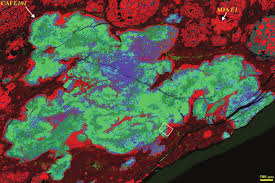
|
Aug
282016 |
Alan RubinComets - Icy Visitors from the Outer Solar System and a Major Source of Water and Carbon to the EarthLocation: Slichter 3853 Icy planetesimals that formed in the outer reaches of the solar system are occasionally perturbed closer to the Sun. In these warmer environs they emit gas and dust and form extensive tails. Comets have bewitched, bothered and bewildered observers since ancient times. One appeared in the sky after Caesar was assassinated in 44 BCE (interpreted as his soul ascending into Heaven); and one heralded Harold's demise and William the Conqueror’s success at the Battle of Hastings in 1066 CE. Comets may also have been responsible for delivering water, organics and other volatiles to Earth early in the history of our planet, setting the stage for the origin of life. Image credit: Alan Sailer 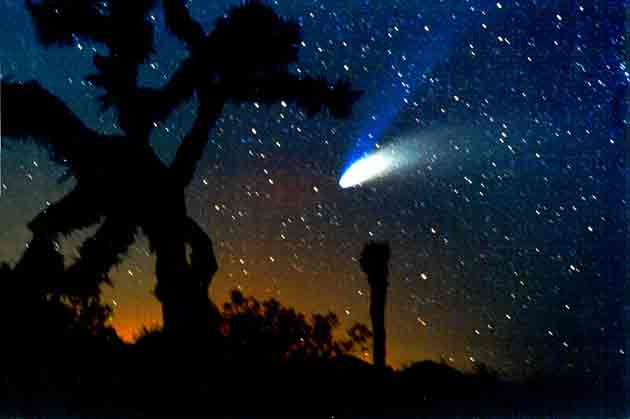
|